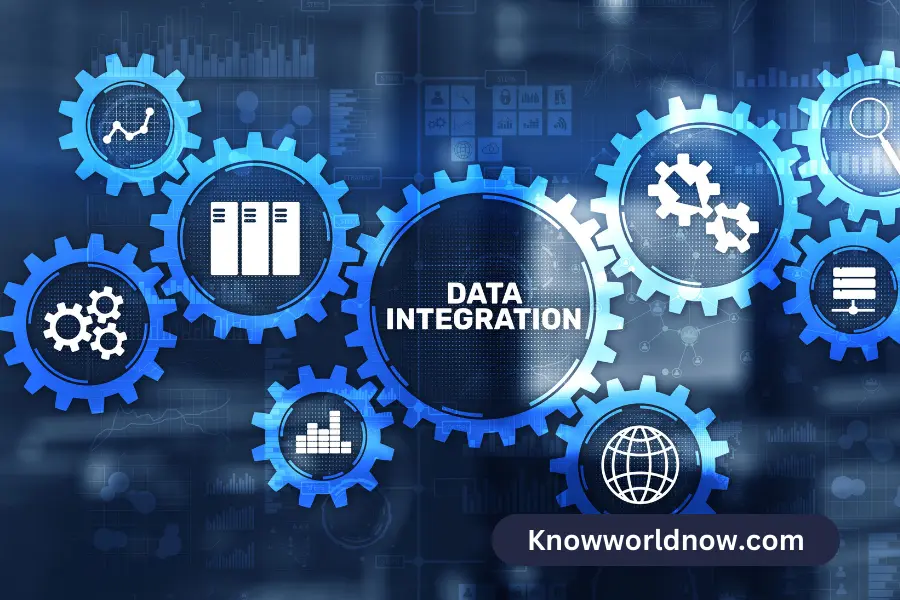Flutter, a popular cross-platform framework developed by Google, has gained significant traction in the mobile app development landscape. While Flutter excels in creating beautiful and performant user interfaces, it is equally important to integrate them seamlessly with backend technologies to build robust and scalable applications.
In this article, we will explore the integration of Flutter with backend technologies and delve into the benefits of building comprehensive and efficient app ecosystems. More info about Flutter here https://111minutes.com/technologies/flutter
The Role of Backend Technologies
Backend technologies play a critical role in mobile app development. They handle data storage, user authentication, business logic, and communication between the frontend and backend components.
By integrating Flutter with backend technologies, developers can create applications that can securely store and retrieve data, provide real-time updates, and interact with external APIs and services.
RESTful APIs for Communication
One of the most common ways to integrate Flutter with backend technologies is through RESTful APIs (Application Programming Interfaces). RESTful APIs enable communication between the frontend Flutter application and the backend server.
Developers can define endpoints that allow the app to send requests and receive responses, facilitating data retrieval, submission, and synchronization with the server.
Authentication and Authorization
Integrating Flutter with backend technologies enables the implementation of robust user authentication and authorization mechanisms. Backend systems can handle user registration, login, and session management, providing secure access to app features and protecting sensitive user information.
Techniques such as JSON Web Tokens (JWT) or OAuth can be employed to authenticate users and authorize access to specific resources or functionalities.
Database Integration
Flutter apps often require persistent data storage, and integrating with a database is essential for handling data efficiently. Backend technologies offer various options for database integration, such as SQL databases like MySQL or PostgreSQL, NoSQL databases like MongoDB, or cloud-based solutions like Firebase’s Realtime Database or Firestore.
Developers can leverage backend technologies to define data models, query databases, and ensure data consistency and integrity.
Real-time Updates with WebSockets
Certain applications, such as chat apps or collaborative tools, require real-time updates and communication between users. Backend technologies provide support for WebSockets, a communication protocol that enables bidirectional and event-driven communication between the Flutter app and the server.
This allows for instant updates and notifications, facilitating seamless and interactive user experiences.
Scalability and Load Balancing
Backend technologies offer scalability and load-balancing capabilities, ensuring that Flutter applications can handle increasing user demand. By employing techniques like horizontal scaling, where multiple servers handle incoming requests, developers can distribute the load and maintain high performance even during peak usage periods.
Load balancers intelligently route requests to different servers, optimizing resource utilization and ensuring application responsiveness.
Cloud Integration
Cloud services provide a powerful and scalable infrastructure for backend technologies, and integrating Flutter apps with cloud platforms can unlock a multitude of benefits.
Cloud providers like Amazon Web Services (AWS), Google Cloud Platform (GCP), and Microsoft Azure offer a wide range of services, including serverless computing, storage, databases, and analytics. By leveraging cloud services, developers can enhance app scalability, security, and availability while reducing operational overhead.
Microservices Architecture
The integration of Flutter with backend technologies also aligns well with a microservices architecture. Microservices involve splitting an application into smaller, loosely coupled services, each responsible for specific functionalities.
Flutter apps can interact with these services via APIs, enabling independent development, scalability, and fault isolation. Backend technologies facilitate the implementation of microservices, providing a flexible and modular architecture for complex app ecosystems.
Performance Monitoring and Analytics
Backend technologies offer performance monitoring and analytics tools that help developers gain insights into app usage, identify performance bottlenecks, and track user behavior.
These tools enable proactive monitoring of system health, response times, and error rates, allowing developers to optimize app performance and enhance the user experience.
By integrating Flutter with backend technologies that provide robust performance monitoring and analytics capabilities, developers can continuously monitor and improve their applications based on real-time data and user insights.
Security and Compliance
Integrating Flutter with backend technologies allows developers to implement robust security measures and ensure compliance with industry standards and regulations.
Backend systems can enforce secure communication protocols (such as HTTPS), implement encryption mechanisms, and apply authentication and access control mechanisms to protect user data.
Additionally, backend technologies can facilitate compliance with data protection regulations, such as the General Data Protection Regulation (GDPR) or the Health Insurance Portability and Accountability Act (HIPAA), by implementing appropriate data handling and privacy practices.
Backend as a Service (BaaS) Solutions
For developers looking to streamline backend development and focus more on frontend app development, Backend as a Service (BaaS) solutions can be a viable option. BaaS providers offer pre-built backend services, including data storage, user management, notifications, and serverless functions.
By integrating Flutter with BaaS solutions like Firebase, Parse, or AWS Amplify, developers can accelerate app development, leverage ready-to-use backend components, and minimize the need for backend infrastructure management.
Conclusion
The integration of Flutter with backend technologies plays a crucial role in building robust, scalable, and feature-rich mobile applications. By leveraging backend technologies, developers can establish seamless communication between the Flutter app and the server, handle data storage and retrieval, ensure secure user authentication, and facilitate real-time updates.
Backend technologies also enable scalability, load balancing, and cloud integration, empowering Flutter apps to handle increasing user demand and leverage the benefits of cloud services. Additionally, performance monitoring, security measures, and compliance practices are efficiently implemented through backend integrations.
By considering the wide range of backend technologies available and selecting the appropriate tools and services, developers can build comprehensive app ecosystems that deliver exceptional user experiences while maintaining high performance, security, and scalability.
The integration of Flutter with backend technologies truly unlocks the full potential of app development, empowering developers to create innovative and successful applications that meet the evolving needs of users in the digital landscape.




![F95Zone Games - The Ultimate Guide for 2021 [F95Z Guide] 5 F95Zone Games](https://knowworldnow.com/wp-content/uploads/2021/07/ArTtW5LrK3b-z-0-y-637f48d86203817a9042a857.webp)